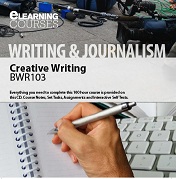
Become a Creative Writer
LEARN and EARN with CREATIVE WRITING
Nurture your Creativity, and Become a Successful Writer
To be successful as a creative writer, you need to develop not only writing skills; but also a technique and an ability to distill your ideas, focus on a project and follow that project trough to it's conclusion. Creative writing is stimulating, but also challenging, and not always completely what the student expects it to be. Then again... if it was what you expect; you would already know what this course sets out to teach you, and you would already probably be a successful writer.
If you want to be a successful, creative writer; and have the commitment to follow that dream; this course could be the path you have been looking for.
Save
Save
Modules
Note that each module in the Qualification - Certificate in Creative Writing is a short course in its own right, and may be studied separately.
Why Study This Course?
Being able to write well and creatively is a valued skill in more jobs than what you might imagine.
Creative and effective writing is sought after in marketing anything. Creatively written education materials are valued in education. Creative writing makes web sites work better.
Many who do this course may aspire to write a novel or produce and publish short stories. Some will. Others may struggle.
There are however many other opportunities; and good writers are unlikely to ever be out of work.
This course can help you to become a better writer, then discover and exploit any latent potential you might have.
Write for work! Write professionally! Write for Fun!
No matter why you want to write, studying creative writing will improve your writing abilities and skills.
You can enrol on the course now, but if you have any questions about the content of the course or studying with ACS, then please get in touch with us today - use our FREE COURSE COUNSELLING SERVICE to get in touch with our expert tutors. They will be pleased to help you!
Save
Save
